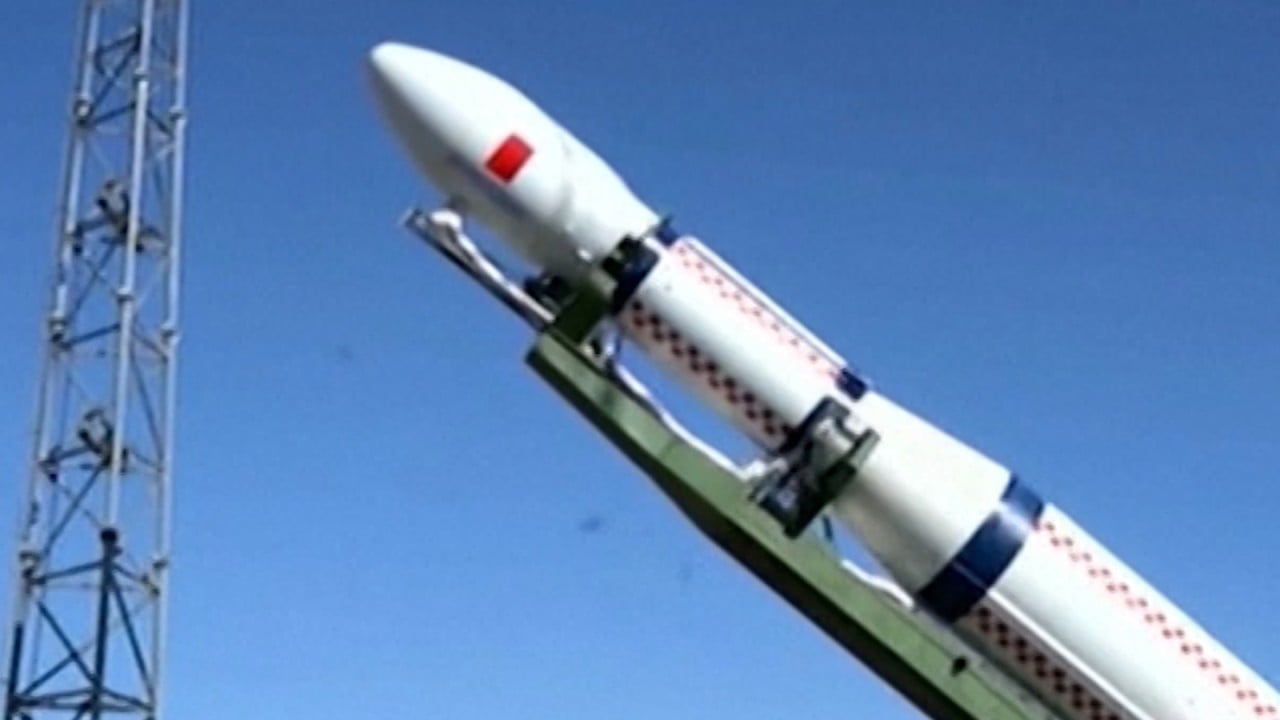
Chinese scientists build system ‘to identify satellite security flaws’
- Researchers at a military laboratory say their system can both spot and fix problems that leave satellites vulnerable to cyberattacks
- Cyber defence system is needed given the increase in the number of satellites in orbit and the increasing risk from hackers, according to scientists
China has built a new cyber defence infrastructure that can automatically detect security weaknesses in orbiting satellites, according to military scientists involved in the project.
The Ontology of Cyber Situational Awareness for Satellites (OntoCSA4Sat), a computer system jointly developed by the National University of Defence Technology in Changsha and Beijing Aerospace Control Centre, maintains a detailed database of satellites, according to the researchers.
Unlike other openly reported databases, the new system can discover a satellite’s possible weaknesses, determine the most efficient ways to hack it or recommend countermeasures.
“The cybersecurity arms race in space has intensified,” lead project scientist Liu Bin, based at a PLA science and technology lab, wrote in a paper published in the domestic journal Systems Engineering and Electronics late last month.
“For example, the US Space Force has established Space Delta 6, a space cyber combat brigade. The US Air Force and the National Security Agency are also developing space cyber weapons,” they wrote, adding that China’s space programme faces a “severe threat”.
Hacking a satellite has become a hot topic in the cybersecurity community in recent years. Since 2020, the US military has been hosting Hack-A-Sat, an annual competition that invites hackers to break into a real satellite.
The purpose of such events, mostly backed by the military or government, is to help satellite operators discover potential weaknesses.
Hackers can gain control of a satellite through sending malicious codes, breaking into a ground station or tampering with a user terminal.
But in practice many hackers find it difficult to do. An effective attack on a satellite needs to be planned using information such as the location of the ground station and the satellite’s orbiting pattern.
The hardware and software used in many satellites are kept secret and communication protocols in space are often different from those on the ground.
But Li’s team demonstrated the potential of their machine in a “case study” involving the American satellite Iridium 108.
The high-performance communication satellite was launched in 2017 and now serves clients including the US military, oil companies and airlines.
Based on publicly available information such as the satellite’s manufacturer, operator and launch vehicle, as well as data that was not available to the public – including the model of the satellite’s on-board computer, the architecture of its central processing unit and its operating system – the team discovered numerous possible vulnerabilities, including one that would allow a hacker to read application data.
The system also came up with a possible solution, so that even a space controller with little experience in cybersecurity could quickly patch up the loophole.
The military researchers did not reveal all the vulnerabilities and did not provide the source of their information.
The South China Morning Post could not independently verify their claims.
Jordan Hassin, an executive director at the Iridium Communications company, expressed scepticism about some of the potential weaknesses identified.
“It regards a model of CPU that is not in our satellites,” Jordan said. “Iridium does not share any specific information regarding how we secure our network. However, I can tell you that we go above and beyond industry best practices on this front.”
Reports of satellites being hacked are rare and include a battery explosion that damaged ROSAT, an X-ray astronomical satellite jointly operated by the US and Germany.
Hackers were reported to have taken control via a Nasa ground station and tilted its solar panels towards the sun.
Skynet, a British military communication satellite, was also reportedly hijacked for a ransom in 1999.
Nasa and Britain’s defence ministry denied that hackers had been involved in either incident.
But Liu’s team believe there will be a rapid increase in cyberattacks in space because hacking is now relatively simple and cheap.
Many types of anti-satellite weapons have been developed including missiles, lasers, microwaves and space robots, but they are costly, available only to a few countries, easily traceable and are likely to produce debris that threatens all space users.
In contrast, not only are cyber weapons something many countries can afford, they are also hard to trace.
The number of satellites in orbit is expected by some experts to increase tenfold in the next few years – many providing commercial services such as broadband – which, according to Liu means there is an urgent need for systems to maintain order in space.



